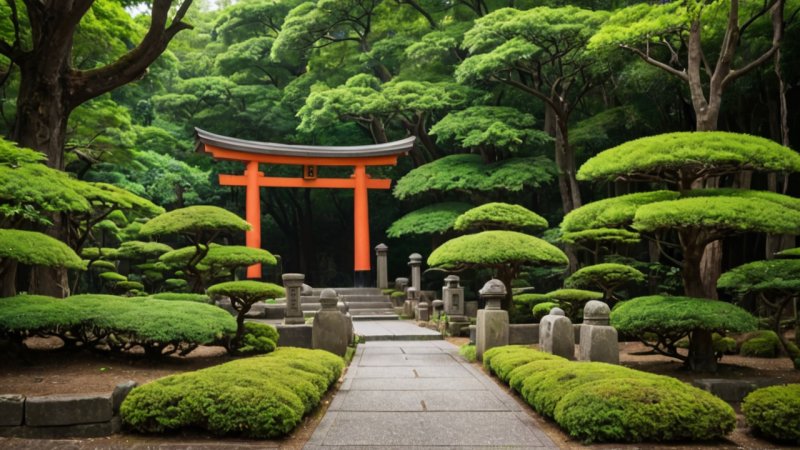Japan is a country steeped in tradition, and one of the most fascinating aspects of its culture is the Shinto religion. Shinto shrines, which are the places of worship for this ancient faith, offer a glimpse into the spiritual heart of Japan. In this article, we will explore some common questions about the rituals and practices associated with these sacred spaces.
What is Shinto?
Shinto is the indigenous spirituality of Japan, characterized by the worship of kami (spirits associated with natural elements and ancestors). Unlike many religions, Shinto does not have a founder or sacred scriptures, and it emphasizes rituals and ceremonies performed at shrines.
What are the main rituals performed at Shinto shrines?
Shinto rituals vary widely, but some of the most common include:
- Oharai: A purification ritual that cleanses individuals and objects of impurities.
- Shinji: A ceremonial offering made to the kami, often involving food or sake.
- Harae: A ritual of purification that is performed before entering the shrine.
- Norito: A prayer recited to invite the kami's presence and blessings.
How do visitors participate in shrine rituals?
Visitors to Shinto shrines can participate in various rituals, often by:
- Purification: Before entering the shrine, visitors should wash their hands and mouth at a temizuya (purification fountain).
- Offering a prayer: Visitors can offer a silent prayer, often bowing twice, clapping their hands twice, and bowing again.
- Making offerings: Many shrines have boxes for monetary offerings, and visitors can also leave food or other items.
What is the significance of the torii gate?
The torii gate marks the entrance to a Shinto shrine and symbolizes the transition from the mundane to the sacred. Passing through a torii gate is an important act of purification, signifying the act of leaving behind worldly distractions and entering a space of tranquility and reflection.
Are there any specific etiquette rules to follow at Shinto shrines?
Yes, there are several etiquette rules that visitors should observe:
- Be respectful: Maintain a quiet demeanor and be mindful of the sacred nature of the space.
- Avoid taking photographs: Some shrines prohibit photography, especially during rituals.
- Dress appropriately: Modest clothing is recommended, and visitors should avoid beachwear or overly casual attire.
What are some famous Shinto shrines in Japan?
Japan is home to thousands of Shinto shrines, but some of the most notable include:
- Meiji Shrine in Tokyo: A beautiful shrine dedicated to Emperor Meiji and Empress Shoken, surrounded by a serene forest.
- Fushimi Inari Taisha in Kyoto: Famous for its thousands of vermillion torii gates that create stunning walking paths.
- Ise Grand Shrine in Mie Prefecture: One of the most sacred shrines in Shinto, dedicated to the sun goddess Amaterasu.
What unique experiences can visitors have at Shinto shrines?
Visitors can engage in unique experiences at Shinto shrines, including:
- Participating in seasonal festivals: Many shrines hold lively festivals throughout the year, featuring traditional music, dance, and food.
- Writing wishes: Visitors can write their wishes on small wooden plaques called ema and hang them on designated boards.
- Experiencing traditional ceremonies: Some shrines offer opportunities to witness or participate in traditional Shinto ceremonies, providing deeper insight into the culture.
How can I learn more about Shinto practices?
To learn more about Shinto practices, consider:
- Visiting local shrines: Engaging with shrine staff or local practitioners can provide insights into rituals.
- Reading books: Many authors and scholars have written extensively about Shinto and its practices.
- Joining cultural tours: Participating in guided tours focusing on Japanese culture can enhance your understanding of Shinto.
In conclusion, Shinto shrines are not just places of worship, but cultural treasures that offer visitors a unique glimpse into Japan's spirituality and traditions. By understanding the rituals and practices associated with these sacred spaces, travelers can enrich their experience and engage more meaningfully with the culture.






